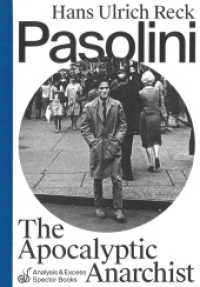- ホーム
- > 洋書
- > ドイツ書
- > Mathematics, Sciences & Technology
- > Earth Science
- > geography
Full Description
This book provides two conceptual frameworks for further investigation of map literacy and fills in a gap in map literacy studies, addressing the distinction between reference maps and thematic maps and the varying uses of quantitative map literacy (QML) within and between the two. The text offers two conceptual frameworks and uses specific map examples to explore this variability in map reading skills and knowledge, with the goal of informing educational pedagogy and practices within geography and related disciplines. The book will appeal to cartographers and geographers as a new perspective on a tool of communication they have long employed in their disciplines, and will also appeal to those involved in the educational pedagogy of information and data literacy as a way to conceptualize the development of curricula and teaching materials in the increasingly important arena of the interplay between quantitative data and map-based graphics.
The first framework discussed is based on a three-set Venn model, and addresses the content and relationships of three "literacies" - map literacy, quantitative literacy and background information. As part of this framework, the field of QML is introduced, conceptualized, and defined as the knowledge (concepts, skills and facts) required to accurately read, use, interpret and understand the quantitative information embedded in geographic backgrounds. The second framework is of a compositional triangle based on (1) the ratio of reference to thematic map purpose and (2) the level of generalization and/or distortion within maps. In combination, these two parameters allow for any type of map to be located within the triangle as a prelude to considering the type and level of quantitative literacy that comes into play during map reading. Based on the two frameworks mentioned above, the pedagogical tool of "word problems" is applied to "map literacy" in an innovative way to explore the variability of map reading skills and knowledge based on specific map examples.
Contents
Chapter 1-From Literacy to Map Literacy. Chapter 2-Map Literacy Studies. Chapter 3-Venn Model for Map Literacy. Chapter 4-Triangular Plot Approach. Chapter 5-Exploring Maps in the Triangular Plot. Chapter 6-Knowledge and Skills for Reading Reference maps. Chapter 7-Knowledge and Skills for Reading Thematic Maps. Chapter 8-Concluding Remarks.







